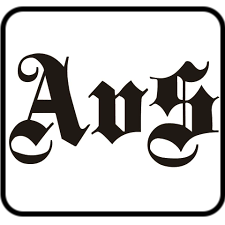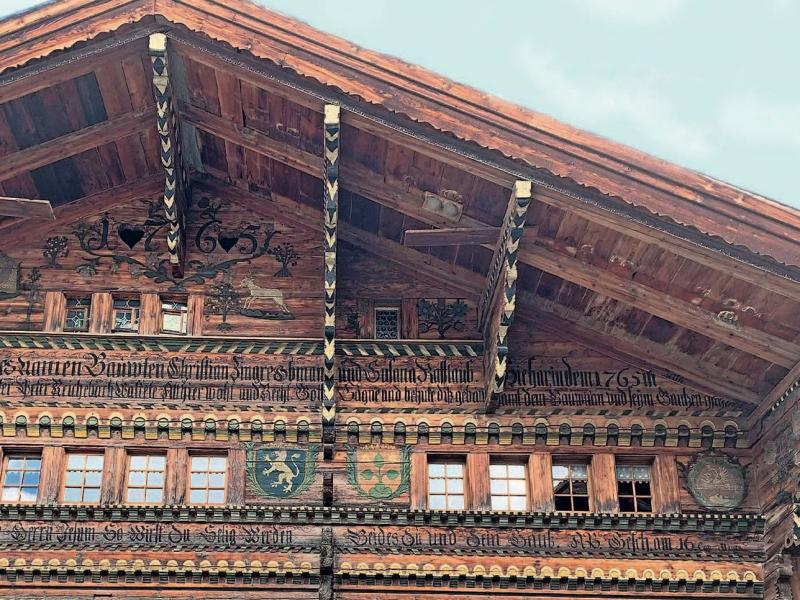Blessings upon your house
20.09.2019 Arts & CultureGermanic tribes attached skulls of slain animals to door openings or house gables for defense and protection against malicious powers. The word 'blessing' is thought to derive from the Anglo-Saxon blōd (blood), referring to the ancient Germanic pagan practice of making places holy or sacred by marking them with blood.
In western Europe, the concept of blessing a house goes back to the Gelasian Sacramentary of c. 750 AD, the second oldest Christian liturgy that, among other things, instructs clerics in the proper benediction to give when someone moved into a new house. Since at least the 16th century, houses in the Saanenland have born inscriptions (Hausinschriften) beseeching the Lord’s protection on the home and its inhabitants.
According to Robert Marti-Wehren, in his 1924 journal article Hausinschriften aus Saanen, the earliest inscriptions found in the Saanenland were carved and painted in upper-case (Majuskeln) Roman letters, in both Latin and German, from 1589 to 1687, and in a blackletter script (Fraktur), from 1627 to 1668. After 1669, most of the inscriptions were simply painted.
Frequently, the styles on individual houses were mixed, with some carved and some painted lines, utilising both Roman and Fraktur scripts, and occasionally mixing Latin, German, and even French text. Most of the Hausinschriften were religious in tone, but some also included sayings from local poets or a meaningful statement from the owner.
Hausinschriften generally included the date, and the names of the master builder, the owner (and often his wife), and the master craftsman or carpenter. They were carved on ground level and painted with hand-milled pigments mixed with a variety of oils. New wood beams had inscriptions painted with a mixture of pine soot and linseed oil so the words could be easily read. Older wood facades, which had turned almost black with sun exposure, were generally repainted in a blend of lead and zinc white. Needless to say, the carved inscriptions had the greatest longevity, and are generally the most easily restored today. Many painted inscriptions have been rendered illegible over time by the sun.
The house inscriptions were fabricated by specialist artisans who, in earlier centuries, had to travel up to the Saanenland from Thun or Bern, presumably on muleback. Such outreach was necessary due to the lack of local craftsmen with the necessary skills. The specialists weren’t paid for their work – they received room and board for the weeks that they were required.
Fluency in writing wasn’t always a requirement – the Hausinschriften could be rendered by functionally literate artisans who gained experience through repetition. This, however, could lead to mismeasurements of the inscriptions on beams. Occasionally, if the craftsman ran out of room, the text would get cramped, be made smaller, or continue on the side of a roof corbel or eave.
Hausinschriften are a window into the living past, and can give insight into the lives of earlier generations. Building a house was, and is, a monumental undertaking. Read the words, ponder the nuances, and immerse yourself in what these houses meant to the Saanenland’s forebears.
Alex Bertea




